The story so far...
Ben Meakin assesses the numbers behind United’s promotion push
Need to buy a last-minute Christmas gift? No postage. No plastic tat. Grab a subscription to The Pinch: the gift that keeps on giving every Monday and Friday.
Words: Ben Meakin
With tonight’s Wigan game taking us to the exact halfway point of the season, it’s the perfect time to take stock of the story so far. It’s been an excellent start for Paul Heckingbottom’s side, building on the strong finish to last season, with injuries the only real stumbling block so far.
Every season there are a couple of teams who find themselves in a “false” position at this stage: a team that sits in a playoff place despite having the underlying numbers of a midtable also-ran (QPR and Blackburn last year), or a side in the bottom three who create and defend chances at a comparable level to a top six side but through bad luck, bad finishing or something else, just can’t seem to piece together results (Middlesbrough for the first third of this season).
For Sheffield United, the table does not lie: any metric you want to look at has us as one of the very best teams in the Championship. So, what’s underpinned this strong start? I had a look at some of the numbers behind our players from the first half of 2022/23, and here’s what came up.
The big four
Before last season kicked off, my fellow BladesPod co-host Andrew half-jokingly suggested that we might have the division’s best keeper (Aaron Ramsdale), best defender (John Egan), best midfielder (Sander Berge), and striker (Oli McBurnie).
Maybe Andrew was just a year ahead of himself with this one – because after half a season you can make a very strong case that we have the best defender, best midfielder, and the best two forwards in the entire Championship.
Anel Ahmedhodžić
Anel Ahmedhodžić has to be in the conversation as one of the best signings in the Championship this season. For years we wondered how we’ll ever replace what Chris Basham brings to our team at both ends of the pitch: the answer landed right in our laps in the form of the big Bosnian.
Statistically, it’s hard to overstate how impressive Ahmedhodžić has been. He has four goals and a pair of assists already, and his offensive contributions are no fluke – just look at the percentiles he occupies compared to all other centre backs in the Championship this season:
These scouting reports are taken from FBRef.com, and are a fantastic way of seeing how well a specific player stacks up against his peers. The percentiles are the ones I’m most bothered about in this article: the higher the percentile, the better a player is when compared to other Championship players of that position. Basically what we’re looking for here is lots and lots of green.
Anyway, Ahmedhodžić’s scouting report. That’s pretty nuts. He also sits in the 85th percentile for progressive passes, 86th for touches in the opposition’s box, and 95th for progressive passes received. He’s not just a big Jake Cooper-style lump who gets his head on everything. He is, as I’m sure many United fans have noticed, absolutely key to our open-play build-up.
Oh, and you like your defenders to defend? He’s great at that too: 93rd percentile for tackles per 90 minutes, 88th for interceptions. Blocks, clearances and aerial wins are towards the lower end of the spectrum, but that owes more to United’s team dominance than an inability on his part (the Blades have faced the fourth-fewest shots out of any team in the league this season and enjoyed the eighth-most possession, so he doesn’t block, clear or head the ball as much as other centre backs).
As far as signings go, this is the biggest of big ticks. Expect more goals from Ahmedhodžić in the second part of the season – it seems safe to assume he’ll have outscored John Egan’s entire Blades career by the summer (Egan currently leads 5-4).
Oliver Norwood
About twelve months ago, I’d convinced myself that Ollie Norwood – after a sustained period of leggy underperformance – was on his way out. He then put in a fantastic second half of the season, once Paul Heckingbottom took over and the 3-5-2 became a permanent fixture once again.
It’s now been a full year of Heckingbottom – and it’s been a full year of excellence from Norwood, now the most vital player in the lineup. John Egan and Billy Sharp might wear the captain’s armband, but this feels like Norwood’s team.
Not only that – he’s actually got better this season. Comparing last season’s percentile data with this campaign, Norwood has taken a big step forward in shots per game, expected assists, and shot-creating actions (99th percentile on the latter).
He’s always been an upper-echelon passer at this level, although if anything, I’m actually encouraged to see his pass completion percentage drop a few points from 79% to 75% – it suggests he’s playing a bit more expansively and taking more risks with the ball. Indeed, this season Norwood is attempting four more long passes per 90 minutes than he did last year, as well as more passes into the final third, more passes into the penalty area, and more crosses.
All that and his defensive numbers – tackles, interceptions, blocks and clearances – are all significantly ahead of where they were last season. In my mind, Norwood has gone from a player on the borderline of being dispensable at this level to the most important player on the field every week.
Oli McBurnie
Speaking of players I thought were done… step forward Oli McBurnie, or “the Highland Haaland” as I’ve seen some fans starting to call him.
It’s difficult to do justice to how good McBurnie has been this campaign. You can justifiably point to the goal against Luton – his first for 44 league games – as the moment that kickstarted this upturn in form, but I’d actually go back to the week before that, against Blackburn.
In that game, McBurnie had eight shots, got on the end of three big chances, and somehow failed to convert any. But the thing is, he was getting chances. In the 2021/22 season, McBurnie took 21 shots in total. He had almost half that amount in this one game. And his expected goals (xG) score suggested that, over time, if he kept getting good chances or taking good shots, they were going to start finding the back of the net.
Fast-forward three months and McBurnie is the joint top-scorer in the Championship, and his attacking percentile numbers look like this:
The main thing to draw attention to here is his non-penalty xG, and the number of shots he takes per 90. In both categories, McBurnie is in the upper-upper echelon. Farcically so, really. He averages 4.83 shots per 90 minutes; no other player in the Championship averages more than 3.6. His average of 0.69 xG per 90 is also the highest in the whole league out of anyone who’s played meaningful minutes.
Nothing illustrates this better than this graph from Opta Stats Perform, showing how many shots players have needed to score a goal in the Championship this season. That dot way, way out on the right there? That’s our number 9.
Arguably the most encouraging part of McBurnie’s red-hot form is that he is only barely outperforming his xG so far this season – he has 9 goals from 8.1 xG. Virtually every other high-scorer in the Championship this season, like Jerry Yates, Josh Sargent, Scott Hogan, Ben Brereton Díaz and even our own Iliman Ndiaye are converting chances at a higher rate than McBurnie.
Why is this encouraging? Because it suggests that the £20m man from Swansea might have other levels to which he could climb this season. Imagine a world in which the striker who gets more shots than any other player also starts to convert those chances at a better-than-average rate. If McBurnie stays fit and United stay good, there’s every reason to think he’ll still be towards the top of the scoring charts come the end of the season.
Iliman Ndiaye
I wrote a big ol’ piece on Iliman Ndiaye for the Pinch about a month ago, comparing his performances this season to Morgan Gibbs-White's last campaign. I’m not going to repeat myself too much here, as you can go back and read the full thing. Short version though – he’s good:
If anything, we might want Ndiaye to spend more time in the penalty area (36th percentile for touches in the box), and to shoot more. Although that in turn may impact his insanely-good dribbling and shot creation numbers so far. What the heck, just let Iliman do whatever he wants: it’s working.
The less-encouraging: Sharp and Brewster
As good as McBurnie and Ndiaye have been, our backup strikers give me cause for concern for the second half of the season. Daniel Jebbison has barely played – just 15 minutes and a single appearance since the second game of the season – which is a concern in itself, but also suggests that Paul Heckingbottom doesn’t yet view him as a viable option as part of a four-striker rotation, even before his injury.
But Rhian Brewster and Billy Sharp haven’t pulled up trees in the minutes they’ve been given. Sharp first: I’m not going to write him off, because this is Billy Sharp we’re talking about. However, the end is going to come eventually for Sharp, and… I hate to say it… but we might be seeing the beginning of the end for a player who turns 37 in February.
Sharp did of course bag his first goal of the season last week, but his underlying numbers are a bit of a red flag. He is way down on a number of attacking metrics compared to last season, dropping to the 30th percentile on non-penalty xG (he was 76th percentile last season), and 10th percentile on shot-creating actions (40th last season).
He was outstanding last season in relatively limited minutes (he played around 65 per cent of all available minutes), so some regression might have been expected, but it’s worrying to see such a drop-off. He’s also much less involved in overall play: he now sits in the fifth percentile for progressive passes per 90 (57th last season), and the 58th percentile for touches in the opposition box (87th last season).
Sharp has only played 593 minutes so far this campaign, with just six starts (one of which, at Middlesbrough, he was subbed off at half-time due to injury), so there’s room to swing these stats in the opposite direction with just a few good games. Maybe his goal against Huddersfield marks the start of that. But all the same, we’re lucky that McBurnie and Ndiaye are having such great seasons.
Rhian Brewster’s stats do offer a small note of optimism, assuming he gets back on the pitch any time soon. One of the main criticisms of Brewster (particularly before he started hitting the net last season) was how little he got involved, and how the game seemed to just pass him by without him really looking like he knew where he was supposed to be.
Some of that still holds true – he sits around the 25th percentile for passes, progressive passes and dribbles attempted – but there are a few things here that suggest he could at least be a viable third-choice striker this season, rotating into the starting eleven when necessary.
For starters, he takes a lot of shots – in United’s squad, only McBurnie can top Brewster’s 3.16 shots per 90, and McBurnie takes more shots than anyone else in the Championship. That translates to 0.33 non-penalty expected goals per 90 for Brewster, which is in the 71st percentile – encouraging signs even if his shot conversion so far lags behind his expected numbers.
I’d feel reasonably confident in predicting that a fit Brewster who continues these numbers should be good for four or five goals the rest of the way. Not a season-defining contribution, but a helpful one.
Of course, that relies on Brewster being available to play more minutes in the second half of the season than he did in the first. And with an(other) apparently serious hamstring injury, there’s certainly no guarantee of that.
With just three goals scored by forwards not named Iliman Ndiaye and Oli McBurnie in the first half of the season, I am once again asking for you to sign a striker on loan in January, SUFC.
The encouraging: Doyle and Berge
The midfield has been a little bit patched-together at times, with Ben Osborn playing more minutes in the middle than I’m sure Heckingbottom would like, and even youngster Oliver Arblaster getting a start just a few games ago. Injury has necessitated cycling through Tommy Doyle, John Fleck, James McAtee and Osborn in various positions across the midfield three, with varying degrees of success: only two goals and three assists from those four players combined.
However – the underlying numbers suggest things might change, particularly if Tommy Doyle can get back in the team.
Doyle’s start to his Blades career can probably be best described as “solid but unspectacular”. He missed preseason with injury, which is a mitigating factor, but I’d have liked more goals and a few more “highlight moments” from the Man City loanee up to this point. Doyle’s stats suggest that these things might change quickly once he gets back to fitness.
As you can see here, Doyle scores highly for shots, shot-creating actions, expected assists (xAG), progressive passes and touches in the opposition box. He’s doing everything we’d want of a driving midfield presence, it’s just that his shots haven’t found the back of the net. Keep these numbers up though, and it’s surely a matter of time. As I said with Brewster, four or five goals in the second half of the season could be a big help in pushing us towards a top-two spot.
I’ll finish this on a high, with one of my favourite players to watch: Sander Berge. Just check out all of those lovely green bars on Berge’s scouting report when compared against other Championship midfielders:
Rolls-Royce. Goalscoring, goal-creating, penetrative passing and… defensive / physical numbers that align with pretty much every United fan’s preconceptions of Berge as a “midfield destroyer”. Don’t play him as part of a two, but he is absolutely devastating on the right side of that midfield three, and I can’t wait to see him back on the pitch for United.
Summing up
This isn’t to say that players’ form won’t drop off for whatever reason, but there are barely any warning signs when it comes to this squad. If players were “outperforming” their underlying numbers, that would put them in a position to regress in the second half of the season: they are not.
It is a fantastic squad for this level, with solid depth at virtually every position apart from (possibly) forward, where we happen to have two of the league’s very best players. The only thing that might hold us back is – as we’ve seen already – an inability to get our key men on the field for as long as we would like. Cross your fingers, Blades, and buckle up – because this could be an exciting five months ahead of us.
Ben Meakin is the creator and co-host of BladesPod, a Sheffield United podcast. You can follow him on Twitter and find BladesPod wherever you get your podcasts.


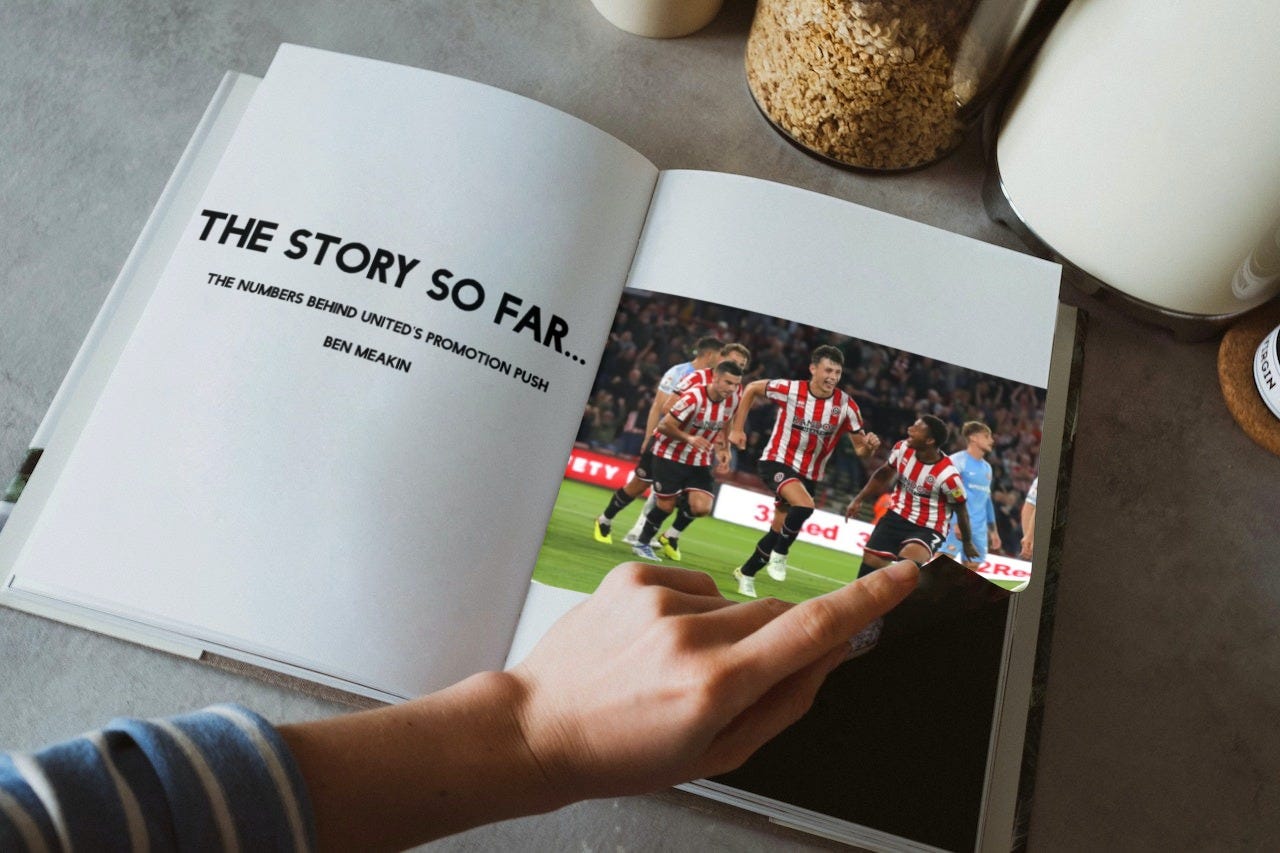
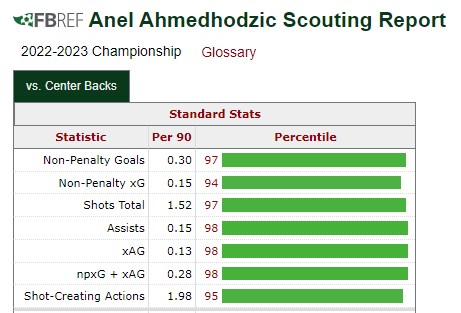
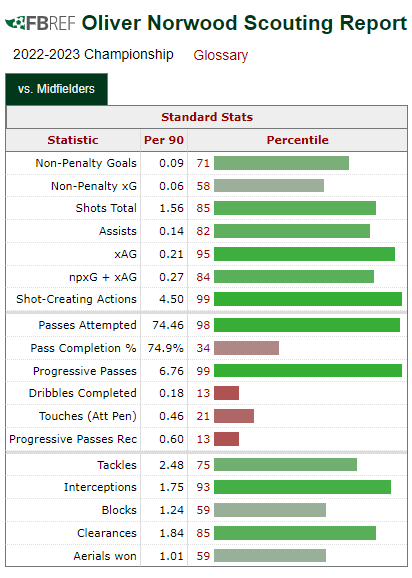
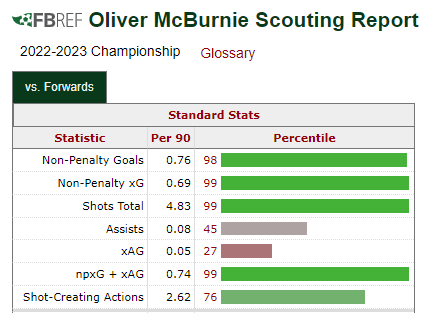
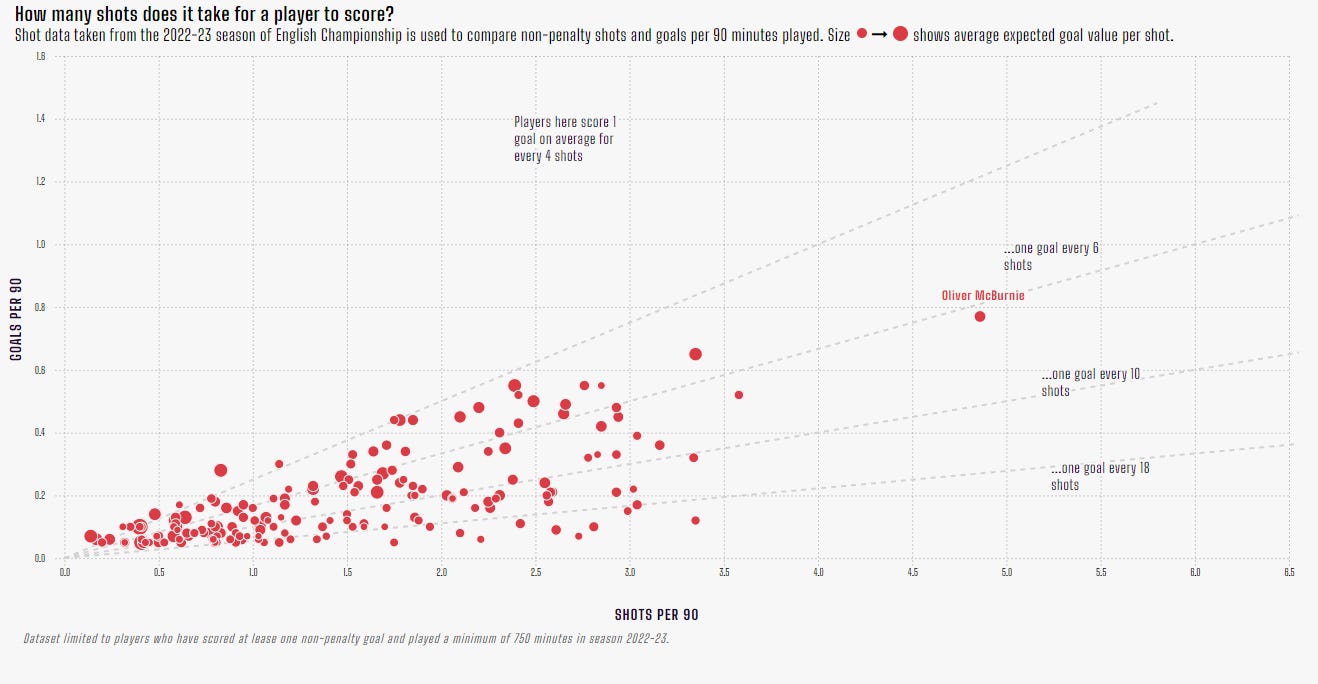
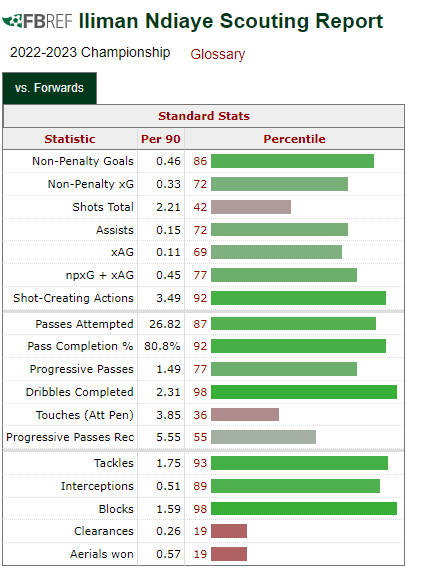
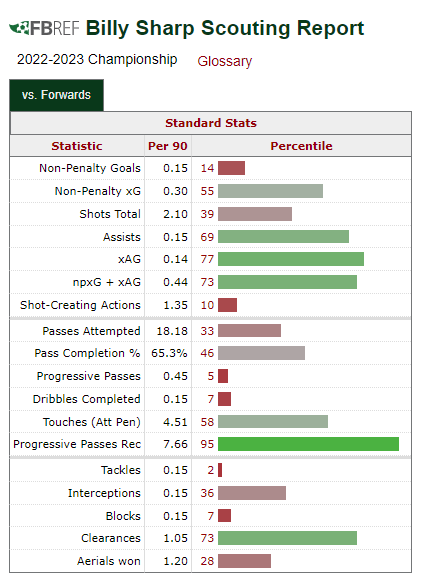
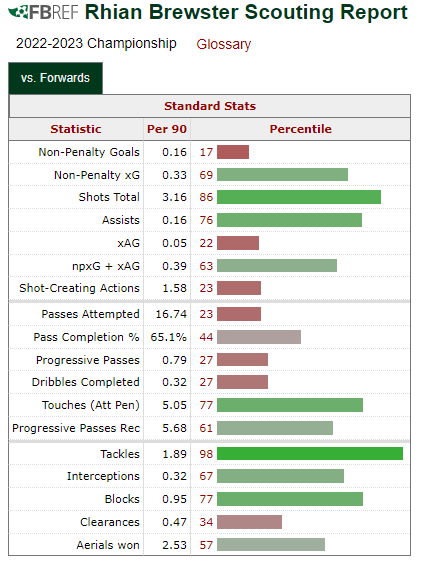
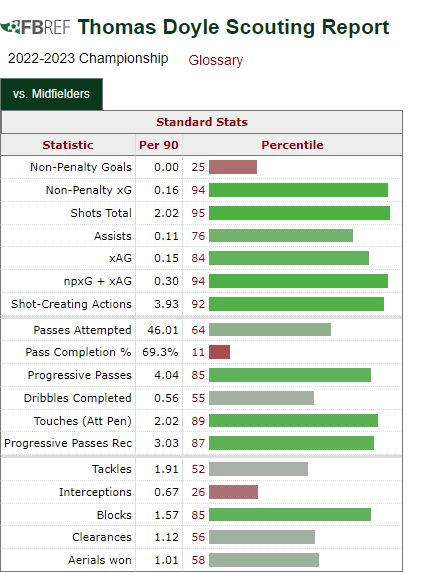
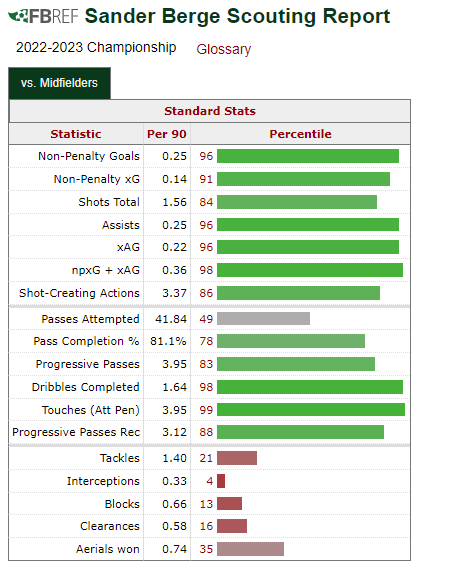
Superb Ben
I agree with your assessments...unless our injuries get markedly worse (not possible I'd have thought!) we have too much quality PLUS strength in depth to our squad to falter. :)
Great article Ben and thank you for the data..... it's enlightening.
What's great is that with players coming back Hecky is now able to manage minutes across the squad & rotate as seen over the past few games.
There are mixed opinions across the Blades fanbase with regards to Sander but the numbers don't lie. He's getting better with match minutes & we're seeing the same with Doyle. Nothing replaces competitive game time!
Step up McAtee and Jebbo now they're fully fit and up to speed with the coaching teams ethos we are really starting to see them unleash their potential.
More of the same please and UTB
Bob D